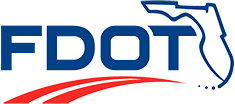Intelligent Transportation System for Lee County
The big picture
Traffic congestion creates many negative effects including increased delays, fuel consumption, and pollution. Adding traffic lanes increases capacity of our roadway network, and effectively managing that network allows us to get the most out the infrastructure we have. New and expanded ITS systems have led to 50% to 60% reductions in accident-related traffic delays nationwide. Furthermore, fewer delays caused by traffic incidents and improved traffic signal systems mean fewer delays, which reduce fuel consumption, idling time, and emissions. The Lee County TMS makes it possible to effectively adapt to the growing demands of traffic management as additional fiscal resources become available.
How Signals and Timing Move Traffic
A traffic signal's primary function is to assign right of way at the intersection and manage traffic moving through the intersection. Properly timed signals maximize roadway capacity, permitting conflicting streams of traffic to share the same intersection efficiently.
Traffic signal timing is very complex and involves multiple factors including the number of intersecting streets, the volume of traffic on roadways approaching the intersection, types of vehicles traveling through the intersection, number of bicyclists and pedestrians, day of the week, and even time of day. These factors don't even begin to consider Southwest Florida's influx of seasonal traffic and special events.
Signal timing is only effective for as long as traffic patterns used to generate original timing remain reasonably similar. However, , traffic patterns change over time. The Lee County Traffic Management System (TMS) system helps adjust signal timing to changing traffic patterns more quickly.
How differently timed signals work together
Managing a signal system requires more than switching lights from green to yellow to red. A well-timed, coordinated system permits continuous movement throughout a network of major streets with minimal stops and delays. When a good balance is not in place, problems at a single intersection can easily be transferred to other locations, resulting in overall diminished system performance.
Signal timing helps traffic flow through a series of signals and avoid stops. Good progression can be achieved when signals are evenly spaced. Good progression becomes more difficult to achieve with irregularly spaced intersections. Creating smooth traffic flow becomes even more complex when cross streets must be also coordinated.
Signals are timed to work best when traffic follows the speed limit. Driving faster will simply get motorists to the next signal too early, causing more stops. Slowing down when there is a red light ahead and giving it time to change to green is the best way to avoid frequent stops.
What signals DO and DON'T DO
There is a common belief that signals are the answer to all traffic problems at intersections. It is important to understand what signals do and what they don't do.
Signals offer maximum control at intersections. Signals assign right-of-way to various traffic movements, permitting conflicting streams of traffic to share the same intersection. They are valuable devices improving efficiency of both pedestrian and vehicular traffic when installed under conditions that justify their use.
However, traffic signals are not a cure-all. Traffic engineers' primary goal is to attain the safest and most efficient traffic flow feasible. Signals may reduce certain types of crashes, most notably angle or broadside collisions, but rear-end collisions typically increase when a signal is installed.
Instillation of unjustified traffic signals can cause excessive delays, and disobedience of signals. Drivers may choose less desirable alternate routes or residential streets not designed to handle the extra volume of traffic.
